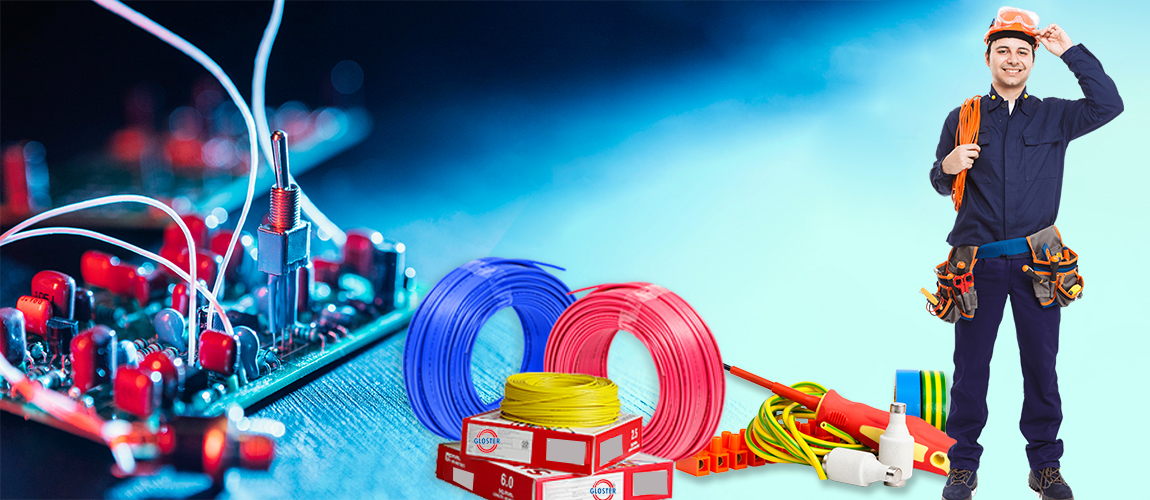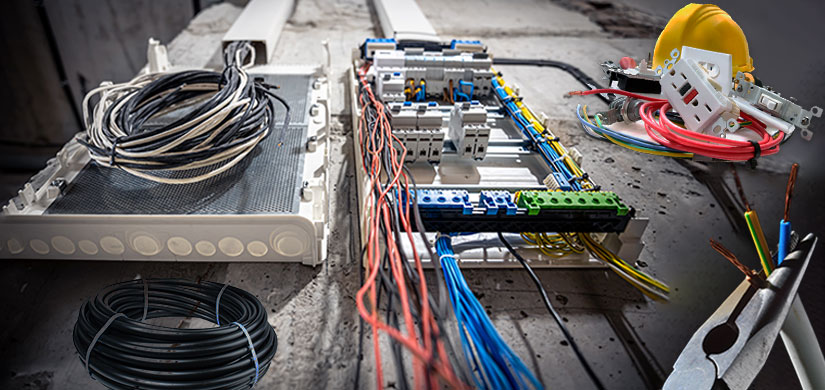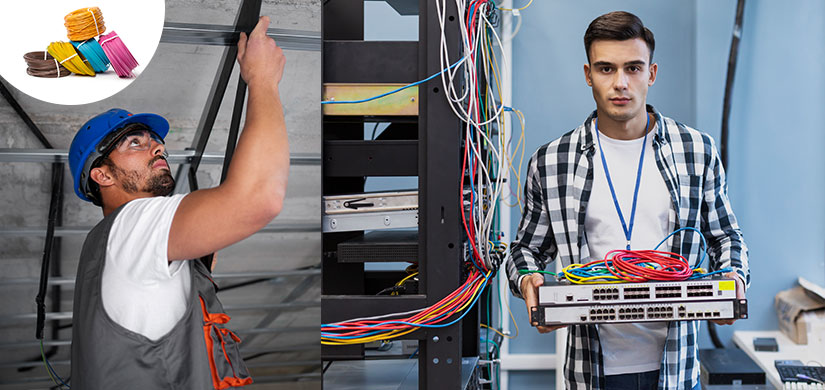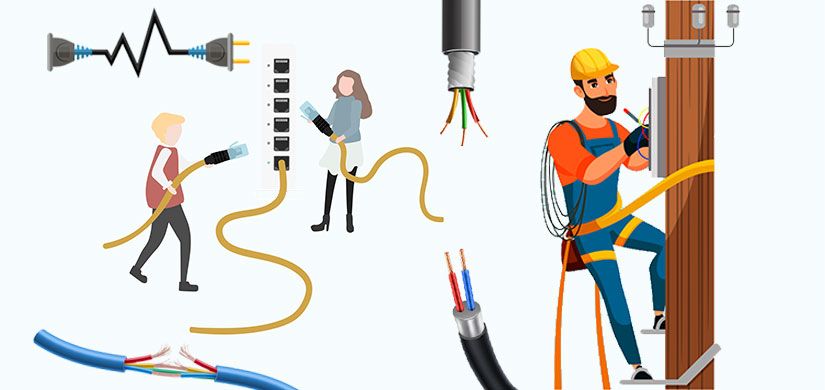
Cables for VFD Application
Variable frequency drives (VFD) are significant devices used in industries for the manufacturing process. VFDs need specially engineered cables to ensure their optimum performance and longevity. This specially designed cable system carries current from the VFD drive to the motor, controlling the current frequency and voltage, avoiding costly downtime, extending motor life, and improving efficiency.
VFD cables can withstand extremely high-temperature, have maximum flexibility, are insulated to control corona discharge, are armoured to minimize conductor damage, etc. These cables are usually available in 600V, 1Kv, and 2Kv.
Gloster Cables design and manufactures VFD cables considering several specifications to withstand the harsh operational environment and boost the life term of the VFD system.
What is VFD and Why They Need Specialized Cables
A Variable frequency drive is a type of motor controller that supports driving an electric motor by changing the frequency and voltage of its power supply. VFD also gets referred to as speed control for adjusting the motor speed by varying the frequency and voltage.
The need to control the motor speed or use of VFD is to improve system efficiency, save energy, convert power in hybridization applications, match the drive speed to the process requirements, reduce mechanical stress on machines, and many more.
To withstand the volatility caused by the variability of power supply by VFD, it requires a variable frequency drive cable for its optimum efficiency. A VFD cable ensures a safe operational environment and prevents damage to drives and motors. VFD cables are less likely to experience damage to insulation with the increase or decrease in voltage. These cables get specifically designed to work in the harsh electrical environment.
Reasons to Choose VFD Cables Over Standard Cables

A VFD system has challenges like excessive electrical noise, failure of motor and controllers, reflected waves, charging currents, common-mode voltage, etc. Standards cables can result in insulation breakdown and cable failure. Non-VFD cables allow common-mode voltage to find its way through the VFD motor and equipment grounds, leading to motor and equipment failure. A few significant reasons to select VFD cables over standard cables are as follows.
 Reduced EMI
Reduced EMI
The higher switching speeds of VFDs inherently generated more EMI. The EMI gets radiated into the environment by the inverter-to-motor cable. It can induce voltages, crosstalk, and Common mode stray currents onto adjacent cables and equipment. It leads to damage to the control system and mechanical parts. VFD cables are electrically balanced and shielded with NFPA 79-compliant crosslinked polyethylene (XLPE) insulation. It helps avoid these issues by reducing the EMI generation. Encoder cables with shielded signals mitigated radiated EMI.
 Provides a Low Impedance Return Path
Provides a Low Impedance Return Path
VFD system has issues with Common mode current or current noise. These currents leave the drive on the primary motor leads and return through any ground path, including cable ground and shield.
VFD cables provide the most attractive path for these common mode currents to return to the drive with minimal disturbance to the surrounding networks and instrumentation. These Cables prove the lowest impedance ground path and are most effective in reducing common mode currents.
 Withstand High Voltage Spikes
Withstand High Voltage Spikes
The VFD system generates excessive electrical noise leading to high voltage spikes. VFD cables with RHW-2 2 Kv rated cable design have a superior dielectric design. It helps resist voltage spikes generated during operating conditions.
Construction of a VFD Cable

The construction of a VFD cable contains four essential elements-Conductor, grounding, shielding, and insulation.
 Conductor
Conductor
A standard VFD cable contains three conductors made of copper or tinned copper. Copper is a good conductor of electricity, and electrons can move freely through the metal. The electrons help conduct heat and electricity through the material. High-performance VFD cables get constructed with flexible high-flex tinned conductors. They are more flexible and thermally stable at connection points. Due to a 4-8 times increase in the conductor surface area, they are more attractive for high-frequency drive output components. Construction-grade VFD cables tend to get made with 7 or 19 strands of bare copper per construction product standards.
 Grounding
Grounding
Generally, Construction grade products use a single helically applied copper tape in contact with three segmented grounds. And in total comprise at least one ground meeting, the minimum requirements of the NEC.
But high-performance VFD cables tend to have a significant excess of copper at ground potential to attract and contain common mode currents. High-performance four-conductor cables with foil braid and heavy drains can have more copper in the ground, ensuring the lowest ground impedance and common-mode current emissions. With the increase in cable size, the need for excess copper at ground potential gets reduced.
 Shielding
Shielding
VFDs create a lot of electrical noise during operation, and shielding helps prevent noise and current from escaping the system while keeping electrical noise away from other applications. VFD cables use a variety of materials for shielding, including copper and aluminum. The shields get applied around the conductors in a foil or woven braid design.
 Insulation
Insulation
Insulation of a VFD cable must be sturdy and able to resist damage in several situations like crushing, compression, impact, and liquid spills. Therefore, based on application, environment, etc., VFD cables get insulated using XLPE, PVC, LSZH, etc. Construction-graded VFD cables are mostly XLPE insulated and comply with the minimum wall thickness requirement of UL1277. But high-performance VFD cables often significantly exceed the specified minimum wall thickness, reduce capacitance, and increase permissible cable distances.
Importance of Selecting a Right VFD Cables

Facilities using VFDs face challenges like a motor failure due to bearing or insulation damage. The application of the wrong cable puts excessive pressure on the motor. So, it is essential for appropriate VFD cable selection based on the VFD system, environment, and other situations. Here are a few reasons that show the significance of the right VFD cable selection.
 Prevent Premature Motor Failure
Prevent Premature Motor Failure
VFD systems expose to harsh operating environments, high voltage spikes, and high-level radiated noise.
Selection of the wrong VFD cables can lead to noise broadcasts affecting nearby devices. A properly shielded VFD cable helps control noise. The lowest impedance path provided by VFD cables helps common-mode noise to return to the path and avoid premature motor failure.
 Prevents Safety Hazard
Prevents Safety Hazard
A VFD cable with proper insulation and robust shielding is significant to avoid unwanted interaction between systems and humans. An XLP-insulated VFD cable can withstand heat and voltage significantly better than THHN and generic control and tray cable.
 Cost-Effective
Cost-Effective
Investment in VFD cables may seem more at the beginning compared to standard cables. But in the long run, it is cost-effective and reduces the chances of multi-million dollar downtime events and costly incidents.
 Resistance Against Corona Discharge
Resistance Against Corona Discharge
XLPE insulation reduces the chances of cable or motor voltage reaching its corona inception voltage (CIV). CIV is the point at which the air gap between two conductors of cable or two windings on the motor breaks down through electrical arcing.
Choose a Well-Designed and Robust VFD Cables to Ensure Reliability of the VFD System
A well-designed and robust VFD cable ensures the reliability of the VFD system by effectively reducing radiant noise, withstanding dielectric stress, and lowering the risk of corona discharge, premature motor failure, and many more.
Gloster Cables, a pioneer in wires and cable manufacturing for more than twenty-five years, brings well-designed VFD cables for VFD systems. The VFD cables by Gloster provide noise immunity, low dielectric constant, thick insulation wall, lower discharge of corona, and proper grounding configurations. It improves the VFD system and workplace safety and cost benefits.
CONTACT US